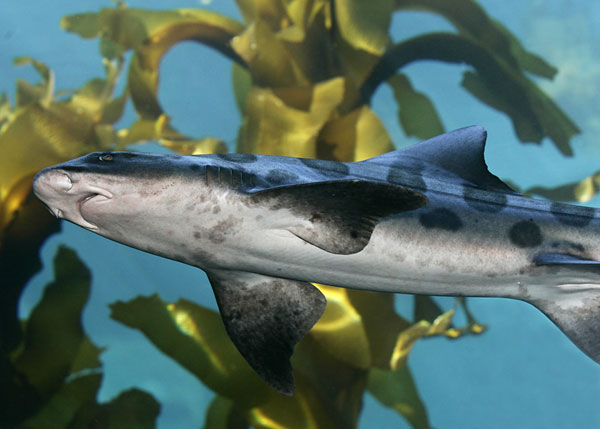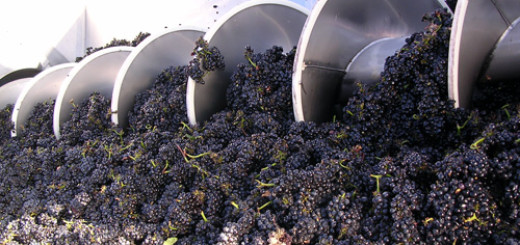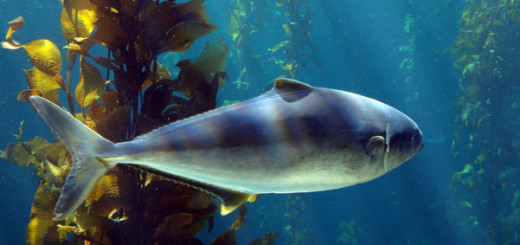The Fins of a Shark
[UPDATE: Governor Jerry Brown signs shark fin ban into law, October 2011!]
As a child of the 70s who witnessed the Jaws spectacle from my land-locked southwestern Ohio vantage point, I possess a healthy respect for sharks. Once, while spear fishing/snorkeling off the ocean side of the Channel Islands, my skin prickled under my wetsuit because, with the Pacific’s liquid expanse containing an untold number of sharks just over my shoulder, I felt VERY much like prey. While I might not have started to hum the threatening music in my head, at that moment off the coast of California, my childhood imagination infused my current reality and put me inside my own scary shark movie. Sharks ARE scary: they are a powerful, slow-growing ocean predator that hasn’t needed to evolve all that much from its earliest deadly efficient design. They’re the wolves, grizzlies, and big cats of the ocean, keeping fish and mammal populations healthy by trimming the weak.

A transformed Open Sea exhibit will feature sandbar sharks—new to the Monterey Bay Aquarium—when it opens in July 2011
Super Cool Sharks
Thankfully, the machismo-fuelled shark hunts of the 70s and 80s have waned in favor of nature/science media featuring sharks as the main attraction. While sharks are still scary, today they are also extremely cool. When the Monterey Bay Aquarium first featured a White Shark in their Outer Bay exhibit in 2004, a million people came to visit and view this animal. Sharks fascinate and intrigue in part because of their power as large hunters. In one Blue Planet episode by David Attenborough, I recall a very slow motion clip of an enormous shark completely emerging from the water in burst of predatory speed as it overtook its tasty prey. This is a spectacular animal: the planet does not possess another species at all like sharks. Without sharks, a top-level predator as important to managing healthy prey populations under water as wolves and mountain lions do on land, we’ll be left with ocean species careening out of balance just as forests become stripped of foliage in areas with too many deer and not enough predators.

This sugar-cookie shark lives on Cannery Row
Despite the popularity of stories about sharks in today’s nature/science media, shark populations risk collapse from the appetites of human hunters and consumers. The continued consumption of shark’s fin soup, traditionally served at weddings and banquets as a coded dish to announce the host’s elevated sense of status, risks compromising the health of the world’s shark population. Some quarters of this debate have descried the perceived cultural attack against shark’s fin soup enthusiasts. In my opinion, one’s need to declare their status through gastronomic specialty and culinary rarity is not more important than the ocean’s need for a healthy shark population. If a market continues to exist for this particular animal product, then one day soon we will only experience sharks as stale cookies from a tourist trap on Cannery Row or a fake Jaws reenactment on a studio lot in Hollywood.
Eating to Extinction
The excellent, unsettling documentary End of the Line examines how healthy populations of ocean species provide stability much like the keel of a boat in stormy seas. With the loss of critical, threatened species like sharks and bluefin tuna, we compromise the balance of species that evolved over millennia to stabilize and sustain ocean health. Nothing good comes from such a destructive approach to harvesting species despite their pleasant taste or our perception of status associated with eating them. Will the insistence on serving and eating shark’s fin soup in the face of inevitable shark population collapse come to resemble our continuing demand for oil: use it up until it’s gone and only then come up with a better plan?

Leopard Shark at the Monterey Bay Aquarium
In 2010, Hawaii enacted a ban on the sale of shark-fin soup, which at the time drew no accusations of politicians attacking a particular culture or cuisine. The ban in Hawaii was total: essentially, the policy helped restauranteurs take shark’s fin soup off the menu or face thousands of dollars in fines. How is the proposed policy to ban the sale of shark fins in California any different from Hawaii’s? It seems odd that charges of racism and cultural insensitivity are being hurled in California when they weren’t in Hawaii.
While I respect people for connecting to their culture in the kitchen, I reject that this can only happen by compromising the ocean’s slow-growing shark population. No matter how ancient and long-lasting, rich cultures and and their associated cuisines must adapt to the changing world we have created for ourselves, especially in the last 50 years with the rise of the industrial food system. Fortunately, creative chefs in San Francisco and across America who love sharks swimming in the ocean more than floating in a broth are leading the way toward solutions to this problem, including creating outstanding shark-free versions of faux “shark’s fin” soup. Children and grandchildren of long time shark’s fin soup enthusiasts can help to turn the tide from decimation of the world’s shark population to preservation by encouraging other options at the banquet table. Status and pride can be demonstrated in more sustainable ways.

Shark-finning practices are brutal and wasteful
More info:
[UPDATE: in September 2011, AB376 passed the California Assembly and Senate and is headed to the Governor’s desk for a signature!]
[UPDATE: in October 2011, Governor Jerry Brown signs AB376 into law. Yay!]
Assembly Bill 376 (FONG/HUFFMAN): Promote healthy shark populations & oceans
Sandbar Shark photo: James D. Watt/SeaPics.com
Leopard Shark photo: Monterey Bay Aquarium/Randy Wilder












